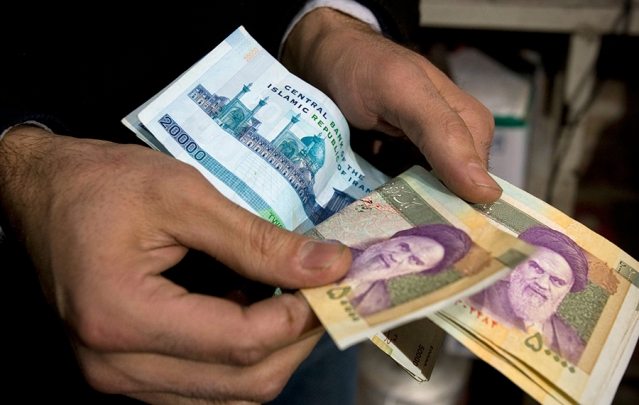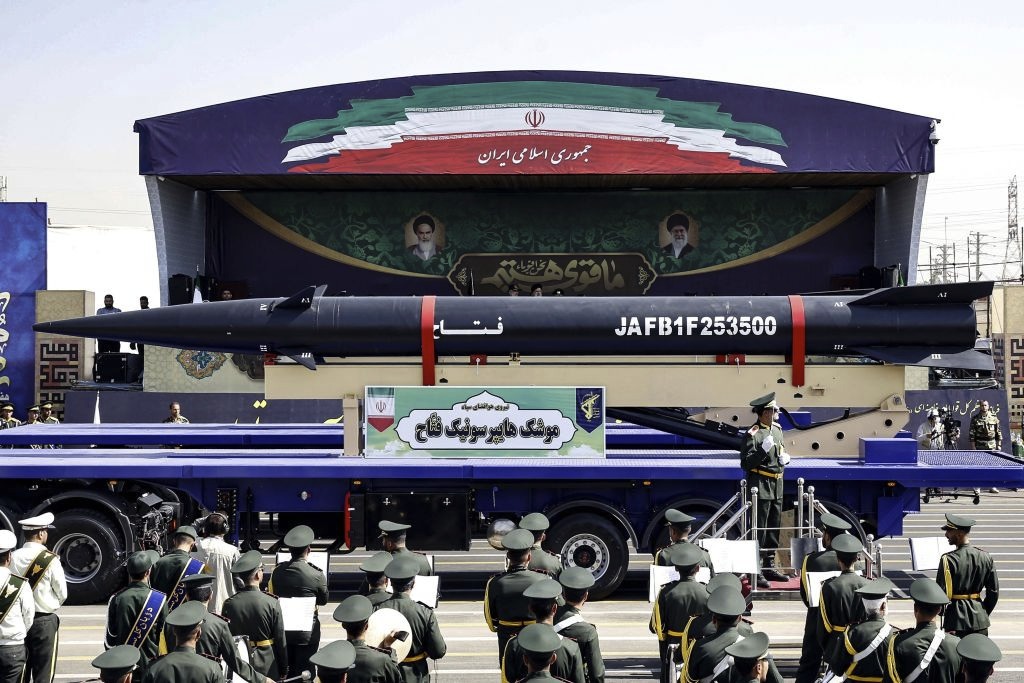Iran’s Response to Sanctions? Ignore Them
باترك كلوسون من معهد واشنطن: إيران تتعامل مع العقوبات بتجاهلها
Patrick Clawson/The Washington Institute/August 30/18
The current Iranian narrative—that economic problems stem from domestic mistakes rather than foreign pressure—complicates the U.S. policy of using sanctions to force change.
On August 28, President Hassan Rouhani answered questions before the Majlis about Iran’s economic problems, only the second time in the Islamic Republic’s history that a president has come before the parliament. He was asked about unemployment, slow economic growth, the fall of the rial, cross-border smuggling, and the fact that Iranian banks still lack access to global financial services. The Majlis formally voted to reject his explanations on most of these issues; only his answers about bank access were accepted.
This came on the heels of the parliament’s August 26 vote booting out Finance Minister Masoud Karbasian. In fact, the president is under pressure to change his entire economic team: he already sacked the Central Bank governor, while the Majlis threw out the labor minister and is now considering a motion against the minister of industry, mine, and trade.
U.S. officials may argue that most of Iran’s economic problems are due to renewed American sanctions, and they are largely correct—but that is not the central complaint being voiced in Tehran. In an August 16 speech, Supreme Leader Ali Khamenei spoke at length on the theme, concluding that “although sanctions have played a role, the main source of the current economic problems can be traced back to internal mismanagement and actions.” Indeed, for all the Western focus on the problems that Iran’s banks have had connecting to the world financial system, that was the one issue on which Rouhani could satisfy the Majlis. If U.S. officials aim to increase public pressure on the regime, they will need to address a domestic narrative in which perception is rapidly becoming reality.
CORRUPTION GETS THE BLAME
One of the key arguments in Khamenei’s speech is essentially correct: “Economic experts and many officials agree that today’s livelihood problems do not emerge from foreign sanctions; rather, they are tracked down to our internal issues.” Domestic commentators are nearly unanimous on this point even though it understates the impact that sanctions have had.
State television is giving ample coverage to the country’s many corruption scandals, airing trials for the first time in decades. For example, three mobile phone importers are being prosecuted for acquiring handsets at a favorable official exchange rate and selling them at inflated prices. In one case, a dead person’s name was used to import thousands of phones.
Indeed, many Iranians blame the recent currency collapse on corrupt manipulation of the gaps between official and free market rates. Khamenei voiced this widely heard complaint in his speech: “The foreign currencies provided were either used by a small group or sold to smugglers who took it abroad or sold it to those who hoarded it, to sell it later for two or three times the value and gain an overnight fortune.” Ahmad Araqchi, the Central Bank deputy governor in charge of foreign currency affairs, was arrested on exactly this charge.
When judiciary chief Sadeq Larijani wrote to the Supreme Leader earlier this month asking for new anti-corruption courts, Khamenei not only approved the proposal, he directed the courts to impose maximum sentences on those “disrupting and corrupting the economy.” On August 12, the judiciary announced that 67 people had been arrested on charges of corruption, and 100 government employees have been restricted from leaving Iran.
The anti-corruption campaign has resonated well with the public—not surprising given that Transparency International’s 2017 Corruption Perception Index ranked Iran 130th out of 180 countries. Many Iranians have also been using the social media campaign “Where is your kid?” to complain that the children of government officials lead lavish lifestyles far out of touch with those of everyday people.
These problems have been exacerbated by just plain bad policymaking. The Central Bank’s failure to stabilize the banking system or prop up the falling rial largely resulted from a series of stunningly stupid policy decisions, such as the short-lived effort to outlaw ubiquitous free market exchange dealers. Meanwhile, crucial bank structural reforms have yet to step up their glacial pace.
In contrast, Iranian politicians and television programs have little to say these days about U.S. sanctions. On August 27, the International Court of Justice began hearing Tehran’s complaint against the United States for allegedly violating their 1955 Treaty of Amity, Economic Relations, and Consular Rights (yes the treaty is still in force; no, it does not prohibit sanctions). Blaming the United States for economic problems was also an element of the August 16 Qom clerics rally. Yet this line of complaint is now the exception rather than the rule—and even then, the focus is on blaming the president for trusting the United States. For his part, Rouhani often brings up U.S. pressure when he defends his economic policies, but that excuse does not resonate well, as evidenced by this week’s Majlis votes against him.
THE RIAL STORY
Meanwhile, the free market rate for the rial stabilized this month, but the damage was already done—the currency has plummeted from 38,000 per dollar a year ago to 107,000. The regime still maintains a special official exchange rate of 42,000 rials per dollar, but this is available only to the politically well connected. It also offers an intermediate rate for exporters of non-oil goods. Almost to a person, Iranians view the rial’s collapse as a barometer of the economy’s health, and they blame the Rouhani government for this development.
The irony is that depreciating the currency is good economic medicine for problems that likely stem from lower export earnings. The classic prescription for a country in that situation is to devalue, which makes imports more expensive and exports more attractive. This effect is clearly happening in Iran, with consumers cutting back on foreign travel and purchases of foreign goods.
The depreciation also means that the government gets more rials from each dollar of oil revenue. As measured in rials, government revenue from oil exports will be up in 2018/19 compared to the budget; the revenue would go even higher if Tehran allowed its official exchange rate to approach the free market rate. So far, though, the government has stuck with the special rate and eschewed any increase in wages.
The downside of the depreciation is that it drives prices up. The monthly inflation rate announced by the Central Bank for July 22-August 21 was 5.2 percent, and if that pace is sustained for a year, the resultant annual rate would be 84 percent. Bringing inflation down to single digits was the proudest achievement of Rouhani’s first term, and in theory he could do it again by following a strict monetary policy. Yet the shaky banking system is in no position to implement that measure even if he were willing to take such a big political gamble.
In short, the rial’s collapse has been good for macroeconomic stability: the budget may run a surplus, and the trade balance will improve. But it is risky for political stability: the real incomes of wage earners are plummeting at a time of sporadic public protests.
THE CLOCK TICKS ON
Senior Iranian officials seem relaxed about the renewed U.S. sanctions, despite the apparent failure of their initial response. When Washington withdrew from the nuclear deal earlier this year, Tehran’s mantra was that the other parties (Europe, Russia, and China) would have to provide benefits as recompense. That seems less and less likely, as major firms from those countries—even government-owned ones—have announced their withdrawal from Iran. For instance, the regime seemed sure that the China National Petroleum Corporation would take over Phase 11 of the South Pars gas project after Total pulled out, but the Wall Street Journal reported on August 21 that Beijing has shown little interest. And on August 8, the Journal noted that the Chinese oil firm Sinopec “is now struggling to find appropriate banking channels” for its planned $3 billion investment in the Yadavaran oil field.
As for Iran’s next response to renewed sanctions, the regime’s thinking is unclear. One approach would be to wait out President Trump in the expectation that he will not be reelected, but there are few signs that Iran is consciously pursuing this strategy.
Whatever the case, the sharp drop in the rial’s value has convinced the Trump administration that the president’s May 8 prediction was correct: “Iran’s leaders will naturally say that they refuse to negotiate a new deal…But the fact is they are going to want to make a new and lasting deal, one that benefits all of Iran and the Iranian people.” Maybe U.S. pressure will bring Iran to that point, but at least so far, Tehran is insisting that its economic problems are homegrown. The challenge for Washington is how to turn the heat up fast and far enough that Khamenei admits these problems are rooted in his confrontational foreign policy. The most likely scenario is that each side tries to get the other to blink: Washington by increasing pressure, and Tehran by waiting until Trump leaves office.
**Patrick Clawson is the Morningstar Senior Fellow and director of research at The Washington Institute.






















